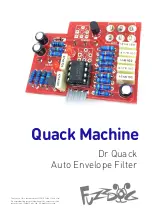
OFITE, 11302 Steeplecrest Dr., Houston, TX 77065 USA / Tel: 832-320-7300 / Fax: 713-880-9886 / www.ofite.com
56
Two o-rings are available for the cell cap. The rubber o-ring is easier to use,
but is not suitable for tests involving high temperature or pressure. The metal
o-ring is more durable, but requires extra attention when tightening the cell cap.
Once you have chosen an o-ring, place it into the test cell in the o-ring groove.
The installation of the metal seal ring is a straight forward procedure. If done
correctly, the seal ring life can be extended indefinitely. The key will be to
tighten the chamber lid to crush the o-ring just enough to prevent the cell from
leaking.
If the o-ring is over crushed, the upper surface of the o-ring will be level with
the inside lip. This will prevent the mandrel from making a good seal and
keep the cell from leaking.
1. Mark the cell body and cap to indicate full closure. If the cell assembly
has these markings, skip to Step 2.
a. Place the mandrel in the cell with no o-ring installed.
b. Screw on the cap until the cap stops on top of the mandrel.
c. Using a Sharpie, make a light mark indicating where the cap and body
line up.
d. Remove the cap and mandrel.
2. Install the o-ring into the o-ring groove inside the cell. Ensure the o-ring is
sitting flush with the o-ring groove.
3. Close the cell and screw the cell cap down hand tight. The arrows will not
line up.
Installed
Metal O-ring
Appendix
Metal Seal Ring
Installation











































